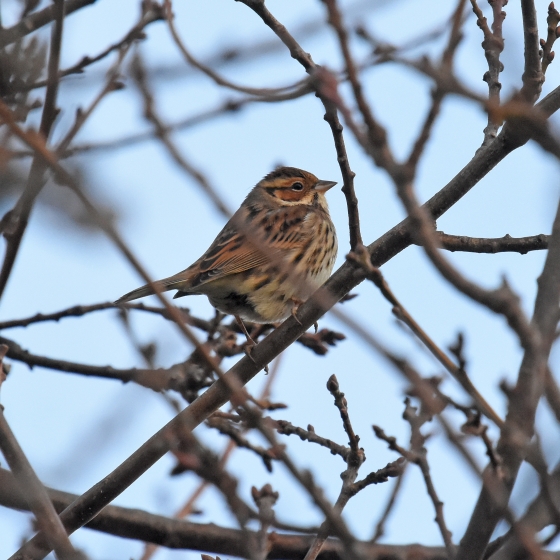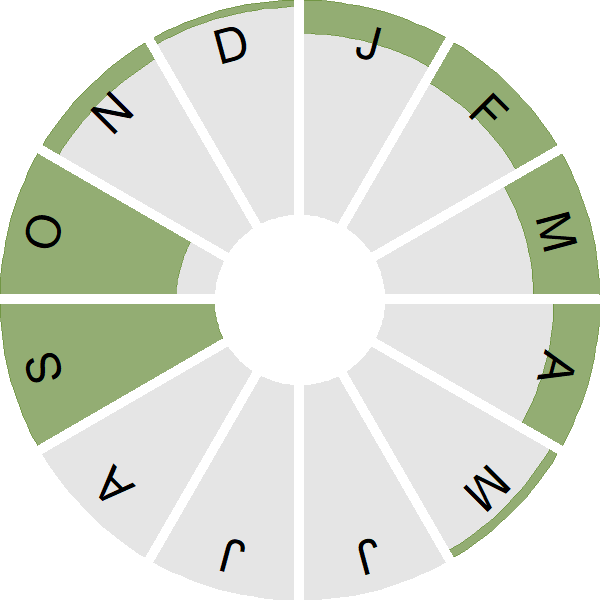Little Bunting

Introduction
Resembling a Linnet-sized female Reed Bunting, this is a scarce visitor from Russia. Most records come from the autumn, although increasing numbers are being found in winter finch and bunting flocks.

Key Stats
Identification
ID Videos
This section features BTO training videos headlining this species, or featuring it as a potential confusion species.
Winter buntings
Songs and Calls
Call:
Status and Trends
Conservation Status
Population Size
Population Change
Little Bunting is a scarce passage migrant that has exhibited a large increase in the numbers observed in the UK in the past 30 years; a few individuals have attempted to overwinter in the UK in recent years [White & Kehoe 2024]. The European population trend in unknown.
Distribution
This species is a rare vagrant and was recorded during Bird Atlas 2007–11 as shown on the map.
Occupied 10-km squares in UK
or view it on Bird Atlas Mapstore.
or view it on Bird Atlas Mapstore.
European Distribution Map
Distribution Change
This vagrant is too rarely reported to map distribution change.
Change in occupied 10-km squares in the UK
Seasonality
Little Bunting is a scarce vagrant most often encountered during autumn migration, although some birds remain to winter and can be seen on spring migration.
Weekly pattern of occurrence
The graph shows when the species is present in the UK, with taller bars indicating a higher likelihood of encountering the species in appropriate regions and habitats.

Movement
Britain & Ireland movement
Foreign locations of birds ringed or recovered in Britain & Ireland
Dots show the foreign destinations of birds ringed in Britain & Ireland, and the origins of birds ringed overseas that were subsequently recaptured, resighted or found dead in Britain & Ireland. Dot colours indicate the time of year that the species was present at the location.
- Winter (Nov-Feb)
- Spring (Mar-Apr)
- Summer (May-Jul)
- Autumn (Aug-Oct)

Biology
Productivity and Nesting
Nesting timing
Egg measurements
Clutch Size
Survival and Longevity
Survival is shown as the proportion of birds surviving from one year to the next and is derived from bird ringing data. It can also be used to estimate how long birds typically live.
View number ringed each year in the Online Ringing Report.
Biometrics
Wing length and body weights are from live birds (source).
Ring Size
Classification, names and codes
Classification and Codes
- Order: Passeriformes
- Family: Emberizidae
- Scientific name: Emberiza pusilla
- Authority: Pallas, 1776
- BTO 2-letter code: LJ
- BTO 5-letter code: LITBU
- Euring code number: 18740
Alternate species names
- Catalan: repicatalons petit
- Czech: strnad malinký
- Danish: Dværgværling
- Dutch: Dwerggors
- Estonian: väiketsiitsitaja
- Finnish: pikkusirkku
- French: Bruant nain
- German: Zwergammer
- Hungarian: törpesármány
- Icelandic: Dvergtittlingur
- Irish: Gealóg Bheag
- Italian: Zigolo minore
- Latvian: maza sterste
- Lithuanian: mažoji starta
- Norwegian: Dvergspurv
- Polish: trznadelek
- Portuguese: escrevedeira-pequena
- Slovak: strnádka malá
- Slovenian: mali strnad
- Spanish: Escribano pigmeo
- Swedish: dvärgsparv
- Welsh: Bras Bychan

